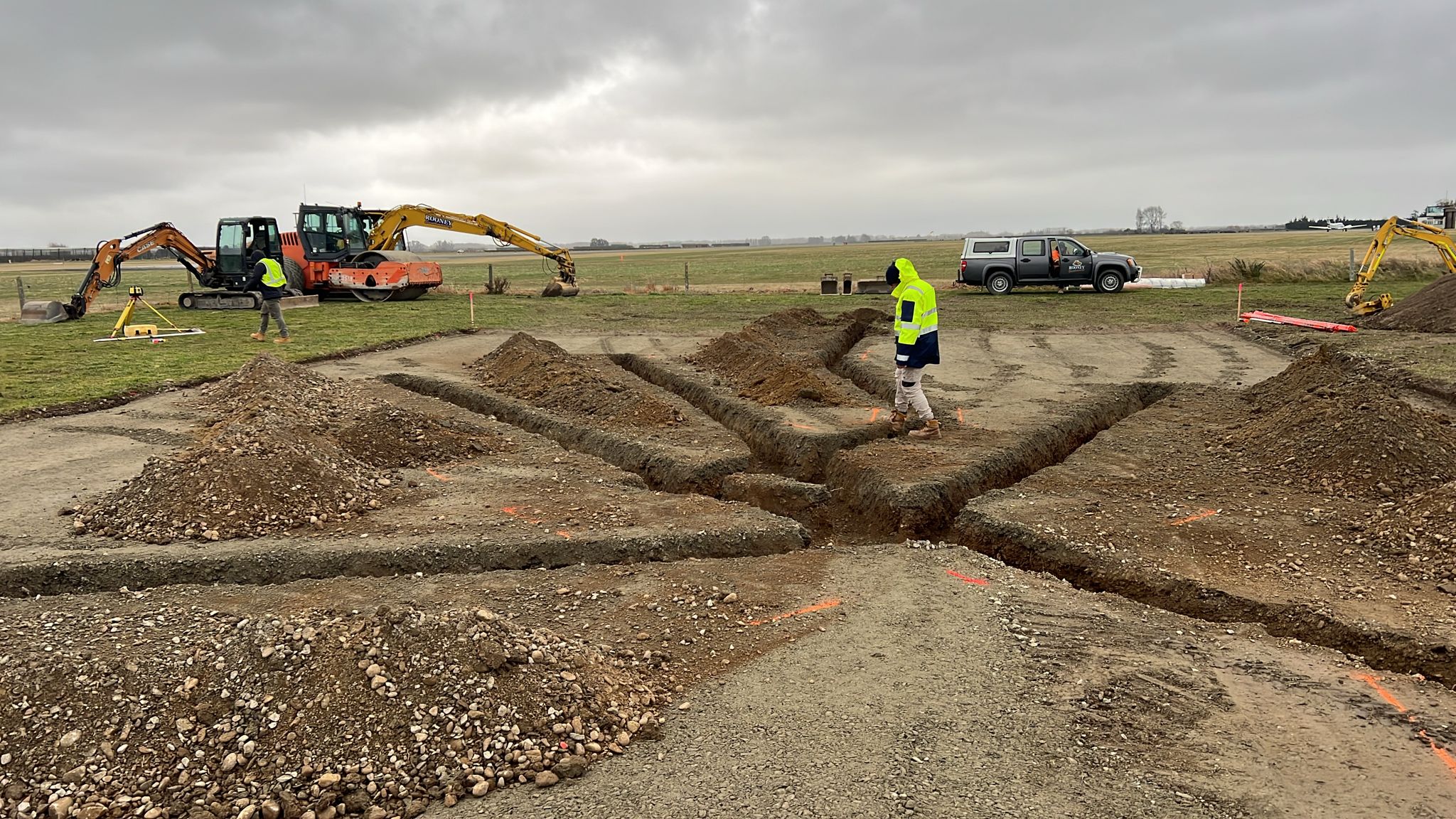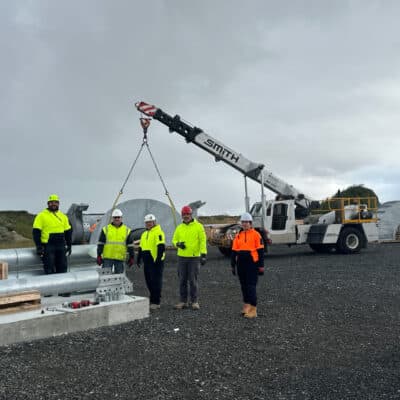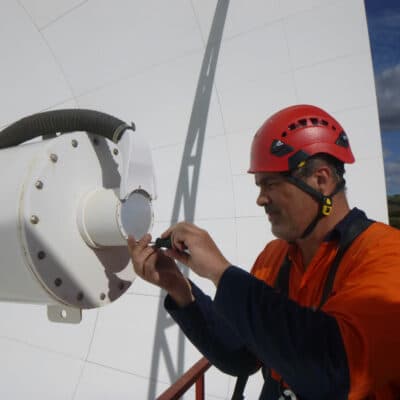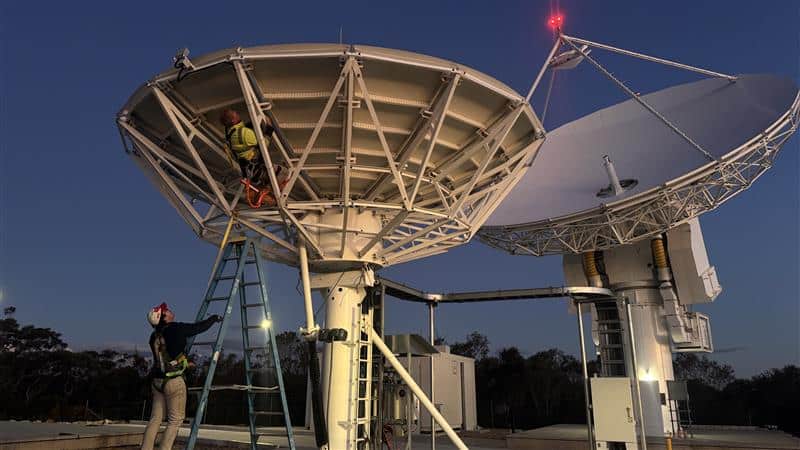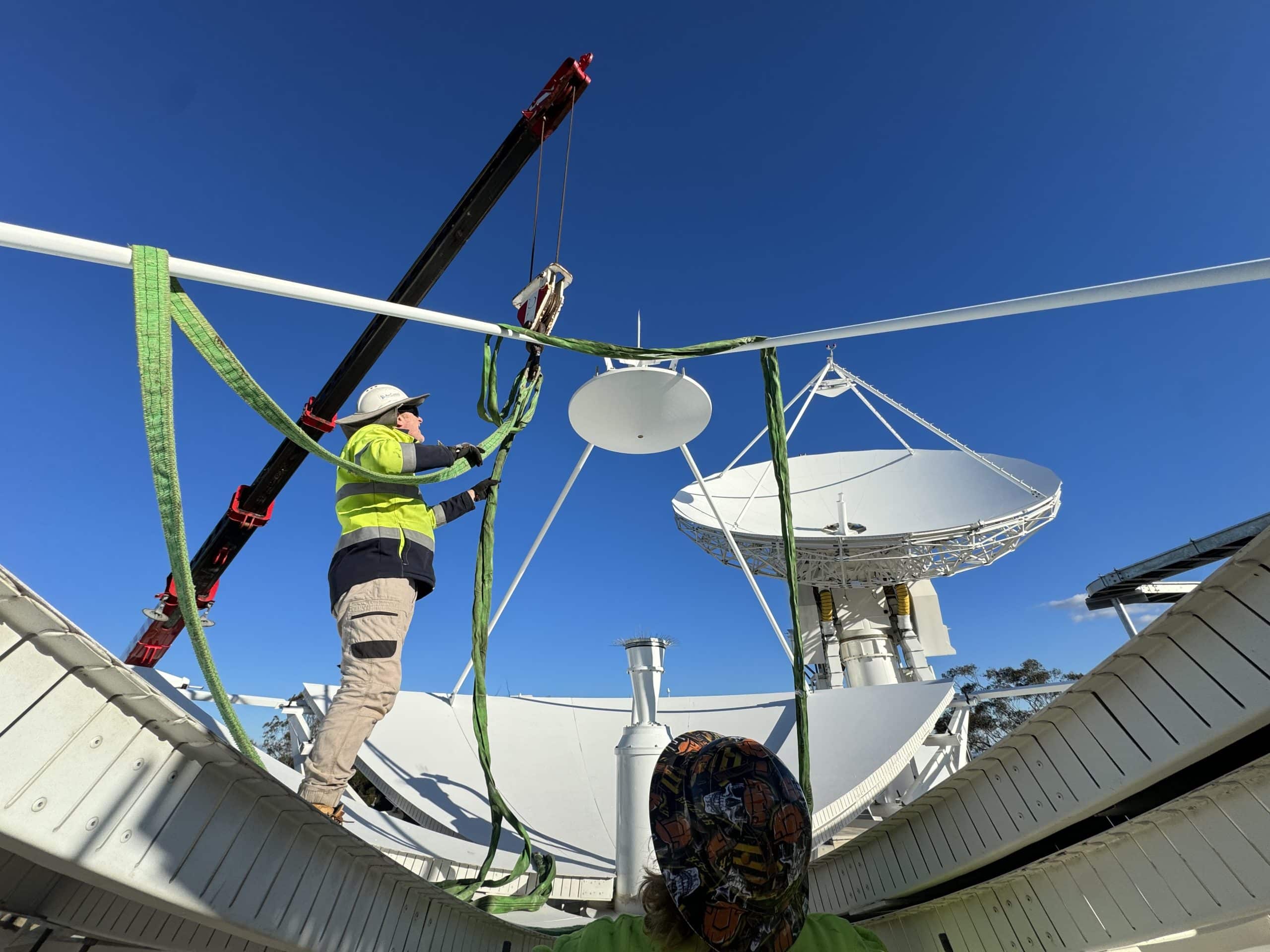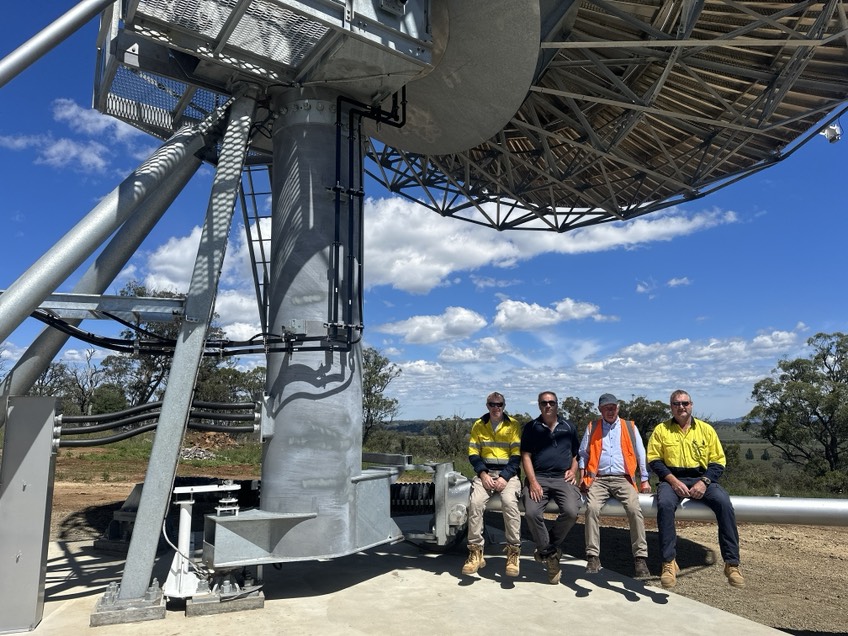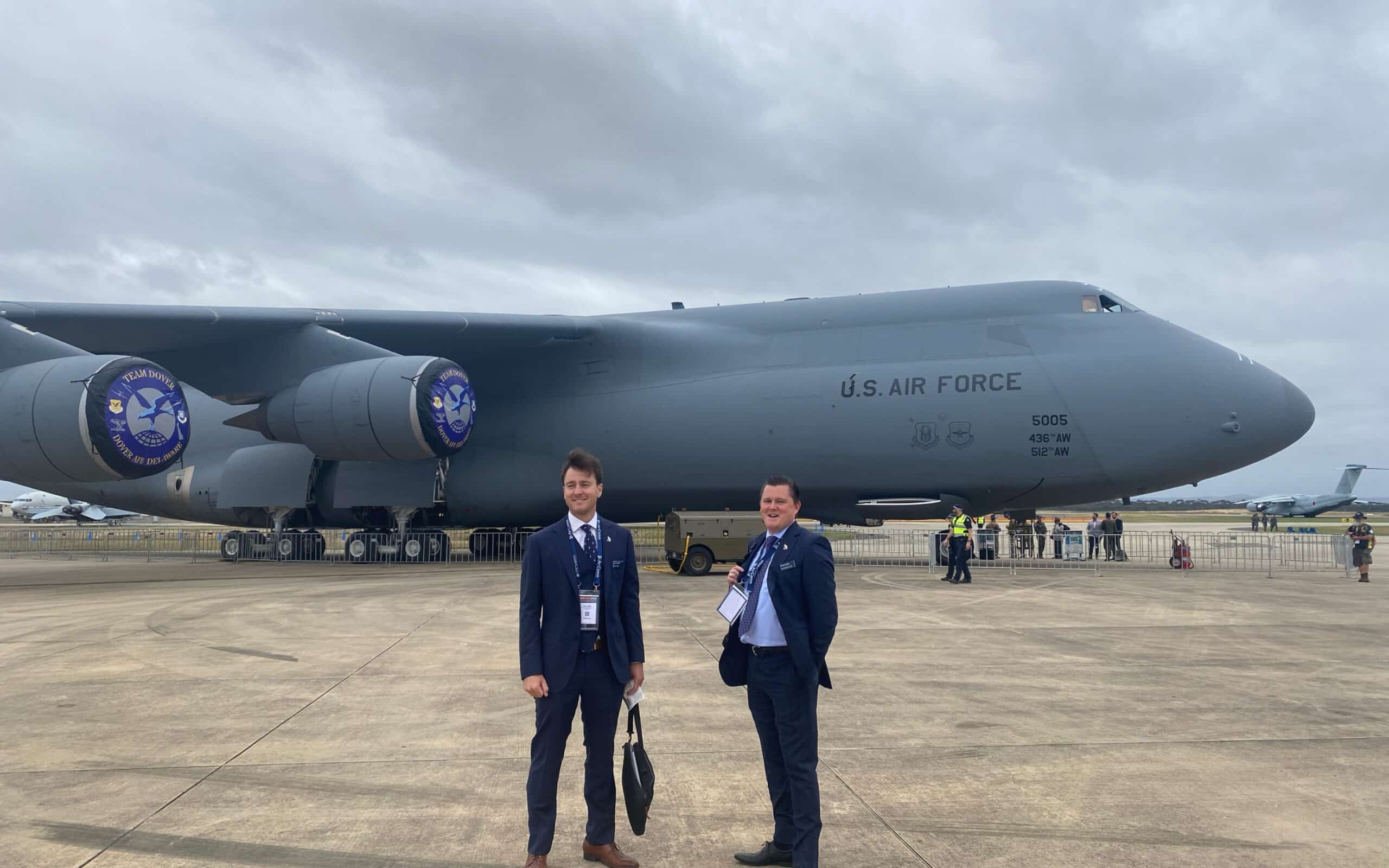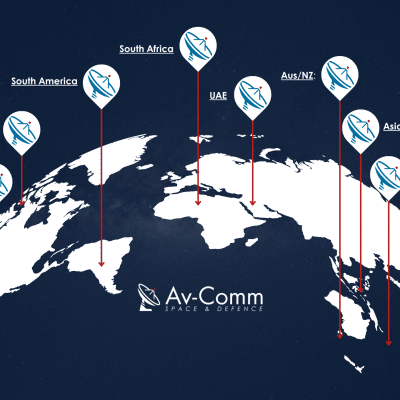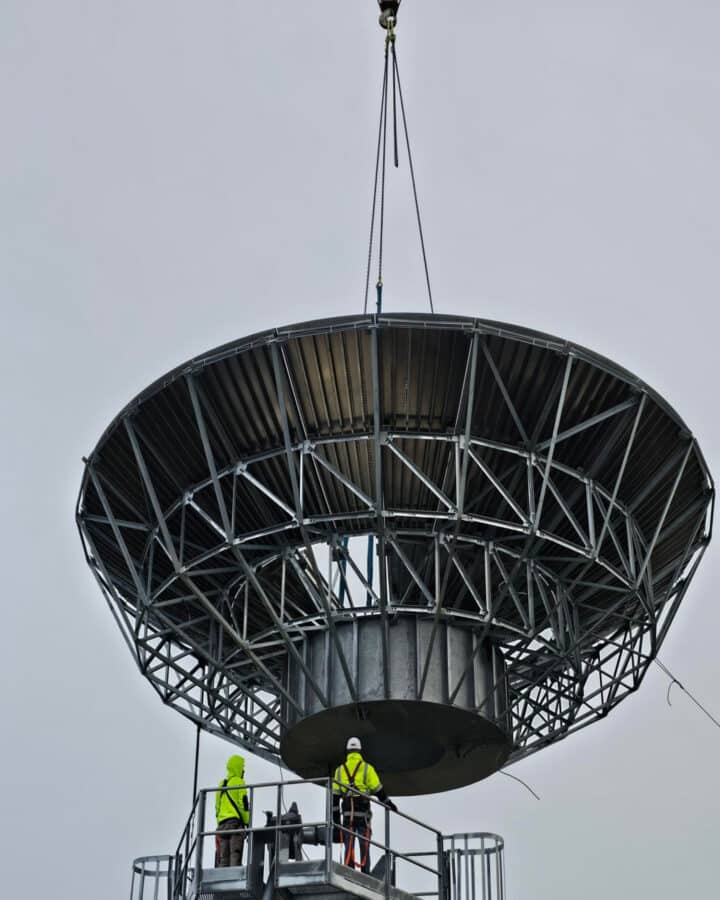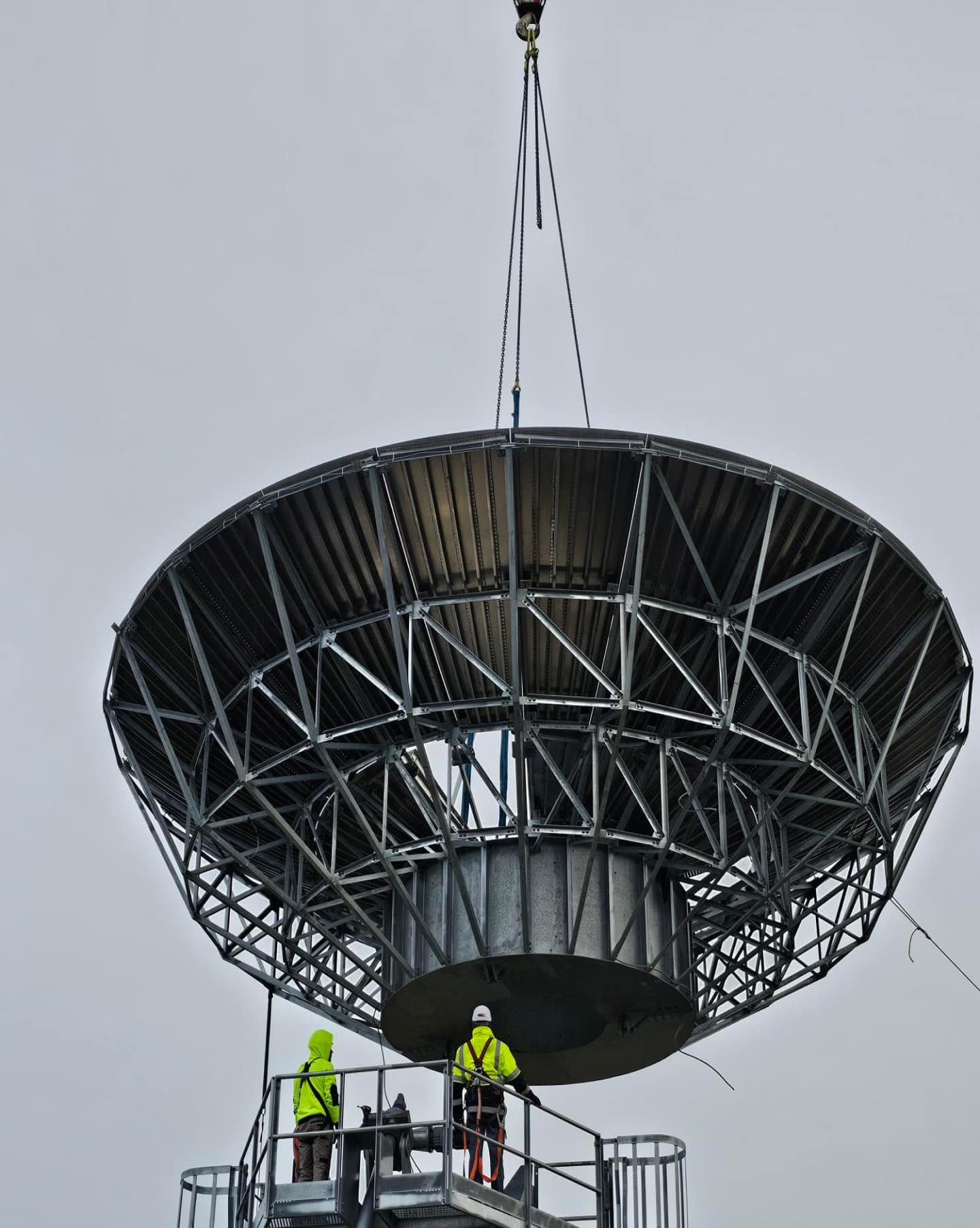General Introduction to Communications / Satellite on the Move
Fixed satellite architecture still remains today’s primary broadcast medium distribution for mass markets and geographic coverage. This satellite broadcast technology also provides fast deployment in emergency situations and in wide ranging remote areas, including those of natural disasters. Diverse satellite communications, (On-the-Move and On-the-Pause), COTM/COTP – is the only technology allowing satellite space segment use without being bound to a fixed stationary position on the surface of Earth. The most conventional approach to accomplish this task is to use mechanically driven dish antenna in various adjusted forms and special shapes to confine it to a limited space associated with mobile terminals.
It must be light, compact, easily transportable whilst at the same time provide high performance characteristics. In such applications as airplanes or high-speed trains the form factor becomes critically important. In this case commonly available dome shaped COTM antennas face a real challenge.
Naturally the ideal antenna design for truly mobile world would be flat panel. COTM flat panel antennas which are currently presented by Av-Comm use similar design but inherently different technological approach. These are mechanically driven and those utilising pure electronic steering. The former is presented by ThinKom brand and the latter is Kymeta solution. Both types have got their unique advantages over each other.
What is Communications on the Move (COTM) & Communications on the Pause (COTP)?
What is different for Mobility? There are two distinct tracking technologies within COTS (Commercial off the Shelf) products, which are further defined to what is known as mobility – these are COTP (Communications on the Pause) and COTM (Communications on the Move).
Communications on the Pause is defined primarily by its operational characteristics – that is, a mobile satellite terminal that is physically mounted on vehicles (as an example) but the vehicle remains motionless for satellite reception i.e. the vehicle must be stopped. These terminals range from traditional Parabolic to emerging Flat Panel technologies.
Communications on the Move is similar to the above, but has the ability to operate on vehicles, boats, aircraft and alike whilst in motion. This product architecture is very complex compared to COTP, to overcome the required pointing accuracy when in motion. Tracking accuracy and response is the critical specification for these terminals whereby they may be required to track at more than 100-degrees per second in all three axis (Azimuth, Elevation and Polarisation to maintain beam integrity). COTM land terminals offers mobility services in virtually all road and off-road terrains.
What Technologies are available for COTM Terminals?
As a developing technology in the way the RF beams between the terminal and the satellite are controlled, there are products available today that fall into two categories namely Mechanical and Electronic Beam Forming. Both have advantages and disadvantages…
Mechanical Tracking Terminals such as ThinKom have been developed from Defence origins with COTM terminals being a cost savings product compared to military grade hardware. Their origin suggests they are more capable in terms of uplink capacity, again due to their heritage. Remarkably, there still are only a few manufacturers that produce a commercial grade ‘Flat Panel’ product.
Electronics Beam Forming Terminals such as Kymeta uses a thin structure with tunable metamaterial phased array elements to create a holographic beam that can transmit and receive satellite signals. The satellite antenna portion of the Kymeta terminal has thousands of individual radiating elements that act collectively on a single signal, like television pixels, to create the holographic beam. By changing the pattern of activated elements, the antenna beam can be pointed in different directions with no moving parts.
Kymeta at a Glance – What is it and how does it work?
Beam Forming Tracking terminals like Kymeta are a more recent development in flat panel COTM terminals. They comprise of all ‘Solid State’ components tending to be much lighter, smaller footprint and cheaper to manufacture. At this stage there are only a few products available and are relatively new to the market.
Reliable – Solid State Electronically – steered antenna, no gimbals, no motors, lower power requirement
Agile – Fast tracking, on-the-move connectivity supports mobile broadband, drive away operations
Kymeta Architecture – Integrated, Layered and modular by design ensures slim-line performance
ThinKom at a Glance- What is it and how does it work?
ThinKom’s ThinSAT-300 terminal features robust sleek form factor, wide operational temperature range, high tracking speed and wider elevation tracking boundaries. It uses separate TX and RX circular panels with mechanically driven azimuth steering and electronic phased array of platters for elevation tracking.
The patented Continuous Transverse Stub (CTS) array, and the Variable Inclination Continuous Transverse Stub (VICTS) array, benefits from the low-profile, ohmic efficiency, tuneable bandwidth, mechanical robustness, fabrication simplicity, and low-cost advantages inherent (and proven) in the basic CTS design, built upon the 10-year commercial and military history of this innovative antenna technology.
The unique two-dimensional scan mechanism for the VICTS array is 100% mechanical, involving the simple rotation (common and differential) of two co-planar plates, one (upper) comprised of a one-dimensional lattice of continuous radiating stubs and the second (lower) comprised of one or more static line-sources.
As the name implies, mechanical rotation of the upper plate relative to the lower serves to vary the inclination of incident parallel-plate modes and the resultant scan angle in the elevation (theta) plane. Common rotation of the two plates in unison achieves the desired agility in the orthogonal azimuth (phi) direction.
Polarisation control and diversity is supported by adding a fixed or rotating polariser layer(s), mounted conformal to the aperture plate, thereby achieving fixed or selectable circular and/or arbitrarily oriented linear polarisation.
COTM Antenna Deployment Opportunities
Both manufacturers offer different RF power configurations and mounting techniques, which are customisable for vehicle and marine applications.
Typical Markets would include infrastructure and services that supports, Emergency Services (including Fire, Ambulance, Police vehicles & Vessels), Heavy Vehicles, which include Government/Private Buses, Heavy Transport including Rail services and other Government Agencies such as Boarder Protection (security & surveillance sector).
COTM Key Capabilities, Applications, and Use Cases
How do Optus use the Kymeta? Recent examples include the use of Kymeta solution providing a satellite backhaul for radio network supporting bushfire response groups (RFS) in partnership with Optus.
Airlines: ThinKom’s ThinSat-Series is widely used to provide the high-speed satellite backhaul for in-flight media content streaming for many airlines such as Virgin Airlines.
Botswana (Africa) Game Parks: Multiple ThinSat-300 terminals are used exclusively by the Botswana Government National Parks (Animal Protection against poachers) policy, as ground communications ‘Command’ vehicles, supporting Game Wardens via associated radio links to their surveillance vehicles.
World Solar Challenge Race: Years 2017 and 2019 has seen the World Solar Challenge Race (WSCR) from Darwin to Adelaide, greatly enhanced the support capabilities of race-crews associated with the event. In 2019, the Vattenfall Solar Team support vehicle utilised the ThinSat-300 terminal provide streaming ‘live’ video for the entire 5-day trip from several of its teams vehicles. Apart from continuous online media updates from team and support members, observers world-wide via 2-way social media, were also able to communicate live with the crew members during the race.
Emergence Response Agencies: Communications on the Move (COTM) provides emergency response agencies with the unique capability of being able to receive live updates including videos, images, and data whilst in-transit to a disaster or crisis. This capability provides critical information in real time to allow emergency responses to better allocate resources and tailor their response to events as they happen.
Ease of Setup & Accuracy
Installation of both ThinKom and Kymeta terminals is relatively simple to setup utilising roof-rack cross bars. A number of cables need to be routed into the vehicle for connection to power and associated satellite modem. Both terminals are powered by an in-vehicle 240-volt inverter.
Another feature of both terminals is the simplicity of operation. Once the terminal is setup by a GUI, which determines the desired satellite for the terminal is to connect to, the operation of the terminal can be as simple as starting the vehicle and driving away (if configured as – Set & Forget). Terminals will automatically go through a process of acquiring and maintaining satellite connectivity whilst ever powered.
